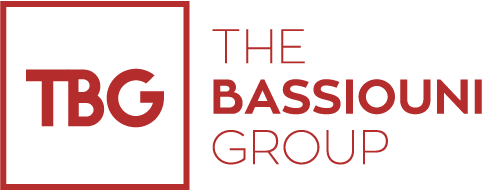Morocco Is Going Big on Solar Energy
The demand for electricity in Morocco has increased by an average of 7% annually since 2002, driven by the country's growing population, rising income, expanding electrification rates, and economic development requirements. The nation relies heavily on energy imports and fossil fuels. However, to address these issues the Moroccan government established a new energy strategy in 2009 to fulfill its goals of energy security, environmental sustainability, and economic transformation toward green growth and job creation.
Morocco now has a goal of becoming a global leader in renewable energy. It is making significant progress in its transition to green energy by adopting massive renewable energy projects, focusing particularly on solar and wind energy. Currently, 35% of its energy already comes from renewable sources, and Morocco is well on target to achieve its decarbonization goals, which has garnered it much praise across the world, and especially within the region, as oil-producing nations try to reduce their dependence on fossil fuels.
The Moroccan Agency of Sustainable Energy (MASEN) and the Ministry of Energy Transition and Sustainable Development announced the kick off of the largest concentrated solar farm in the world. Noor II, mentioning that “the energy transition minister had opened a tender for private companies interested in joining the program in September 2021.
The agency also announced that work has begun with the first phase of Noor II, the 400-MW mega-solar energy project, consisting of 14 lots spread over seven locations throughout the country. 13 lots were already awarded to private companies to start the work. These locations include: Sidi Bennour (lots 1 to 4), Kelaa Sraghna (lot 5), Bejaad (lots 6 to 9), Taroudant (lot 10), El Hajeb (lot 11), and Ain Beni Mathar (lot 13). The project sites are chosen based on factors such as their topography, suitability for solar PV technology, and potential socioeconomic benefits to the area.
The Moroccan government now boasts one of the most ambitious green energy economies in the world, having recently raised renewable capacity production of the country's energy from 45% to 52% by 2030, 70% by 2040, and 80% by 2050. Despite missing its 2020 goal, Morocco has the renewable energy capacity to supply 37% of the nation's energy in 2020. However in 2019 it saw a little decline in the amount of energy produced from renewable sources, which was closer to 20% of the nation's total. But still Morocco has come a long way.
The country's multi-phase Noor solar development plan will increase its installed power generation capacity by 2 GW, as a result increasing its domestic energy mix to 52% by 2030. Similar to Noor I, a solar energy project already completed in 2016, Noor II will be using concentrated solar power technology to generate energy. The built solar plans for the Noor II project uses innovative techniques such as using curved mirrors that concentrate radiation to heat fluid tubes which are released to a power unit. This is in contrast to regular solar panels which send energy directly to the grid. The energy is then stored by the unit to be used later, particularly at night when demand is highest.
The Noor II project is expected to strengthen the domestic electricity capacity in line with the economic potential of the relevant areas. However others claim that major clean energy projects, like the Noor concentrated solar plant, have mostly benefited nations outside Morocco and not the local population. With two electricity cables currently connecting it to Spain and ambitions for a subsea connection to the UK, Morocco is presenting itself as a clean energy hub with the ability to export renewable energy to Europe. However, vast amounts of water must be extracted for megaprojects like the Noor plant in such a dry area.
While Morocco’s emissions are small compared to many other developed countries, it has taken significant steps towards achieving a more sustainable and green economy. These investments promise to be beneficial not just from an environmental perspective, but also from an economic and social angle. If other countries in the region were to pursue similarly ambitious renewable energy targets, a zero-carbon future could be in our grasp within this century.
References:
https://www.mei.edu/sites/default/files/publications/PF26_Hochberg_Moroccorenewables_web.pdf
https://edition.cnn.com/2019/02/06/motorsport/morocco-solar-farm-formula-e-spt-intl/index.html
https://www.esi-africa.com/solar/first-phase-of-a-solar-energy-mega-project-in-morocco-launched/
https://energycapitalpower.com/morocco-kicks-off-first-phase-of-noor-ii-solar-megaproject%EF%BF%BC/
https://atalayar.com/en/content/morocco-launches-noor-ii-solar-power-plant
https://renewablesnow.com/news/morocco-opens-call-for-400-mwp-noor-pv-ii-project-726582/
EDITOR'S NOTE: TBG is focused on global solutions. We leverage a Global Network comprised of more than 1000 experts in over 150 countries. Through TBG Consulting, TBG Global Advisors, TBG Purpose, and TBG Capital, we undertake global projects — from Kenya to Kazakhstan — and transform challenges into opportunities. TBG Purpose is a leading Corporate Social Responsibility (CSR)/Sustainability partner for corporations, institutions, and governments. We provide an integrated set of solutions and enable organizations to meet their Sustainability and ESG objectives

